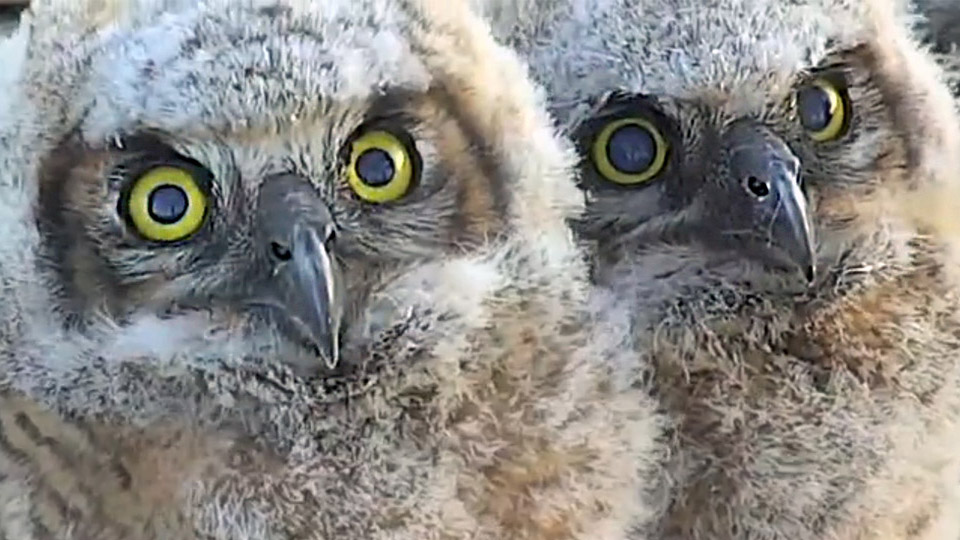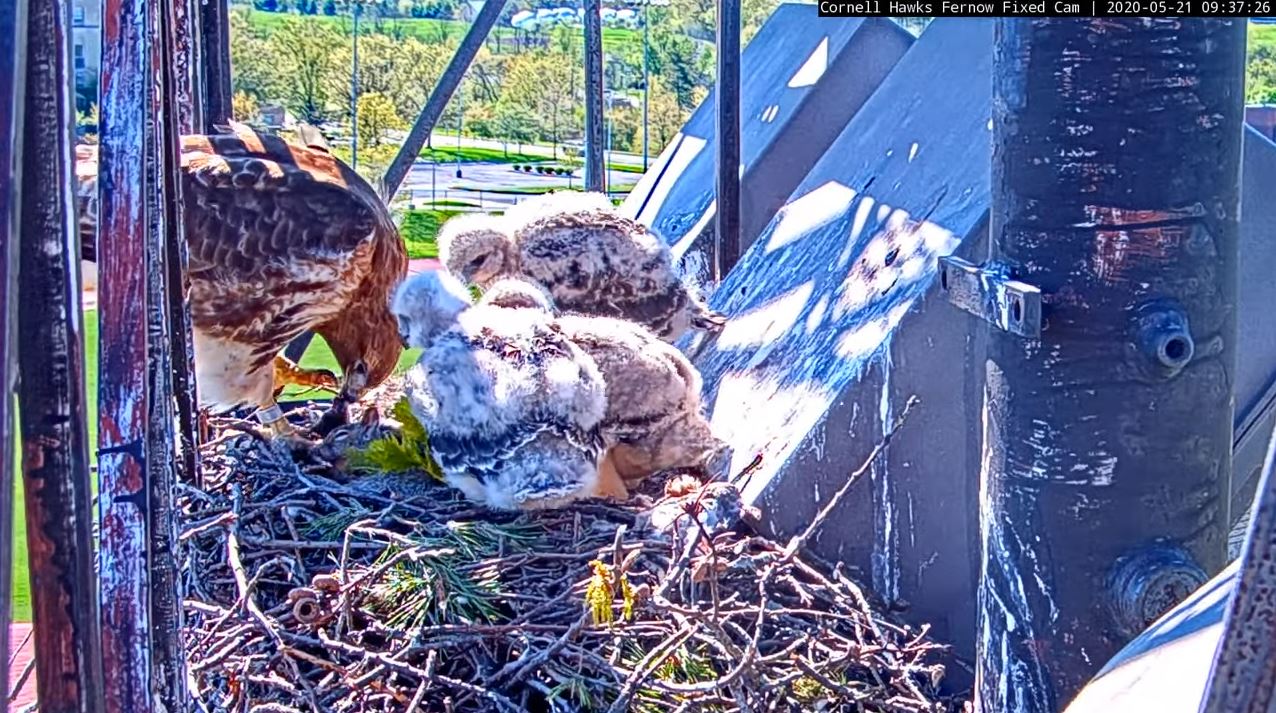 October 2, 2020When were (or weren’t) we watching?
October 2, 2020When were (or weren’t) we watching?In the midst of the pandemic this past summer, the community came together and connected with nature by collecting data on the Cornell Lab’s Red-tailed Hawk cam. From May to June, over 320 people collected data to better understand the…
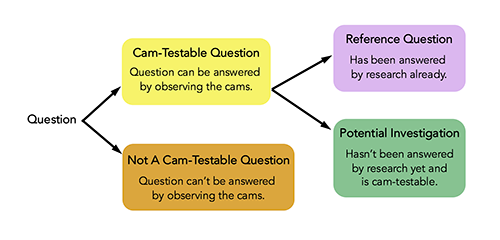 May 18, 2018What Kinds of Questions Can We Investigate?
May 18, 2018What Kinds of Questions Can We Investigate?Watching the Bird Cams can generate all kinds of questions. Some questions may have answers already based on past research. Other questions may not have answers yet—but could be answered by collecting and analyzing data from the cams. It’s those…
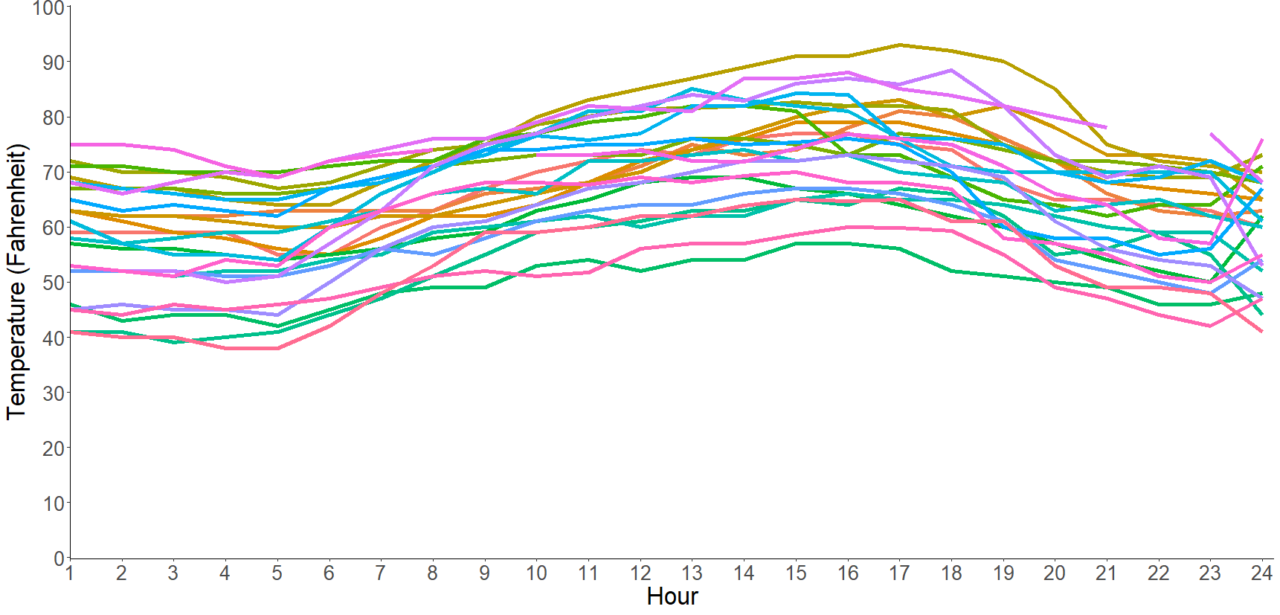 September 18, 2020What does the weather data look like?
September 18, 2020What does the weather data look like?Weather is important to understand when studying birds because it can potentially affect how they behave. The Hawk Happenings community recognized this and specifically included weather in their research question, theorizing that Red-tailed Hawk behaviors at the nest might vary…
 June 4, 2020We Have Less Than Two Weeks Left!
June 4, 2020We Have Less Than Two Weeks Left!#bp-article-content, #bp-article-content p { max-width:885px; }
Things are happening at Hawk Happenings. The first nestling may leave the nest as early as next week! That means we don’t have much longer to collect data.
As of yesterday, over 100 people have made…
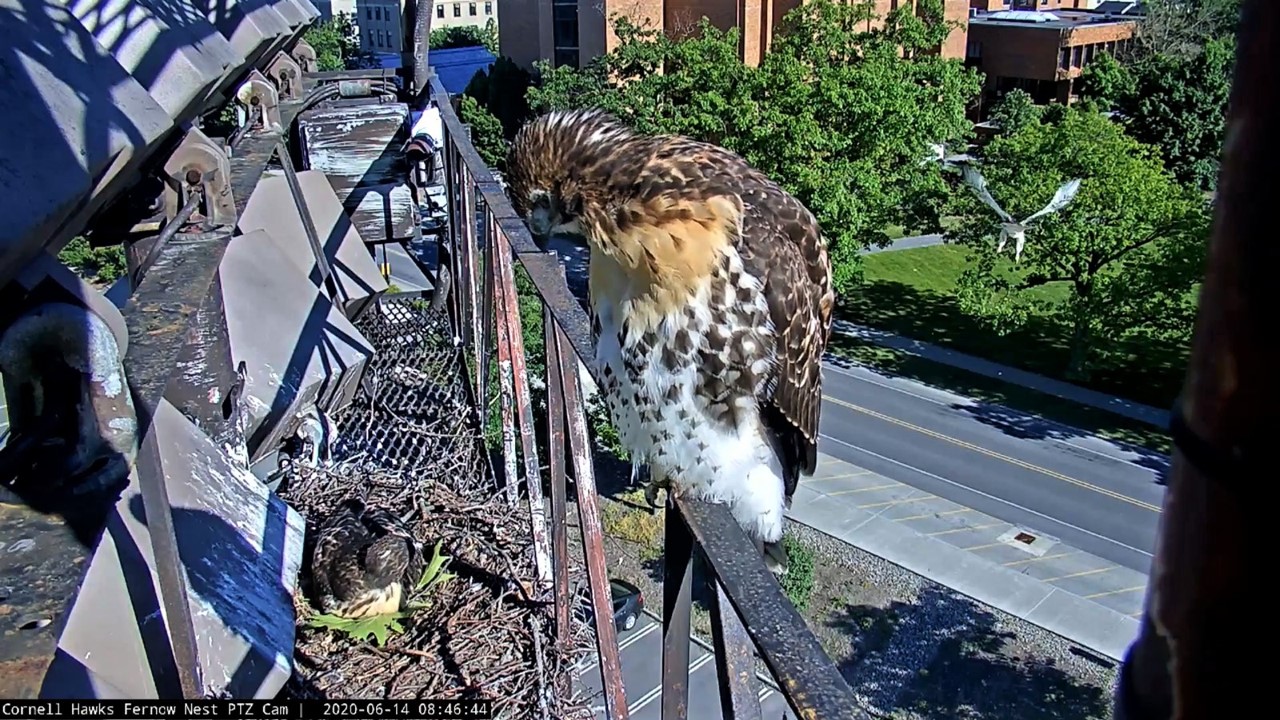 June 16, 2020We Did It!
June 16, 2020We Did It!It’s finally happened! All three nestlings tested their wings for the first time over the past few days. The first nestling left on Friday, June 12th, followed by the other two over the weekend.
If you missed it, be sure to…
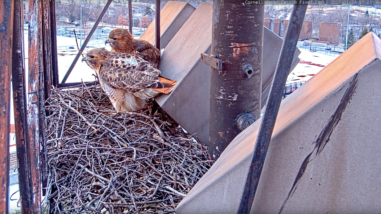 April 30, 2020Time to Vote! Which Question Would You Like to See Investigated?
April 30, 2020Time to Vote! Which Question Would You Like to See Investigated?We’ve brainstormed, we’ve refined, and now it’s time to vote on the question that you’d like to see the community investigate. We’ve narrowed it down to five questions based on four criteria that we discussed on the Question Design Board:…
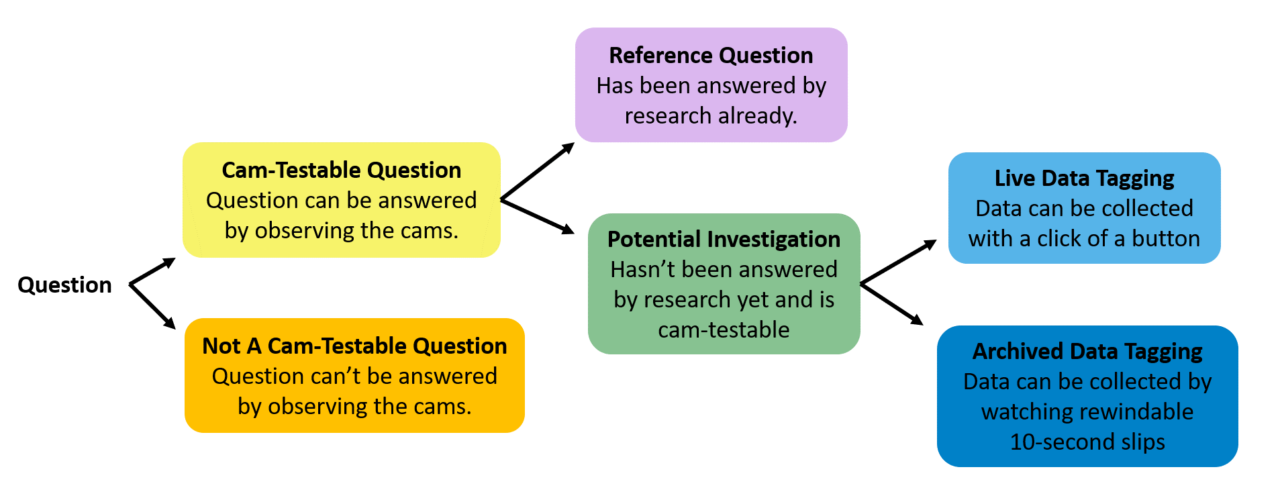 April 14, 2020The Data Tools
April 14, 2020The Data ToolsWhen we watch the cams, we can come up with all kinds of questions once our curiosity is piqued. Taking note of interesting patterns is how scientific investigations start. Once we have questions in hand, the next step is to…
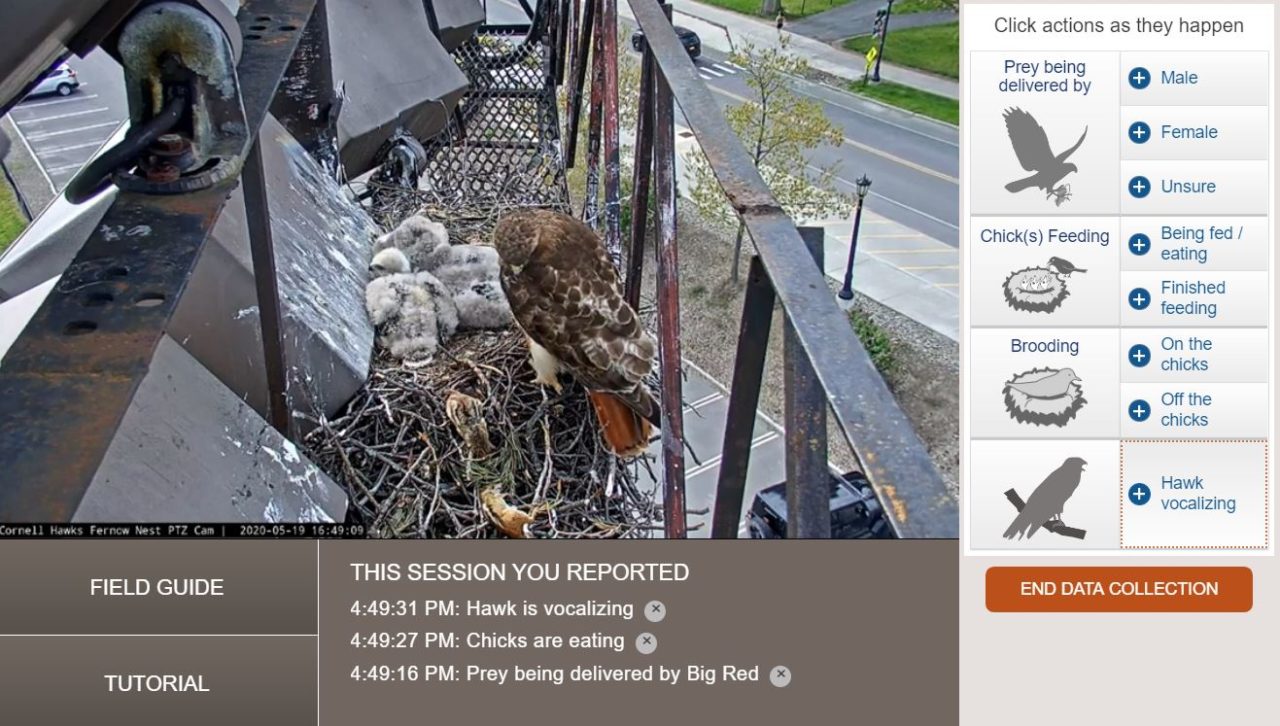 May 21, 2020Start Collecting Data for the Hawk Investigation!
May 21, 2020Start Collecting Data for the Hawk Investigation!It’s time—we’re ready to start collecting data for Hawk Happenings, a new name for the current investigation using the Cornell Hawks cam. The name was inspired by the community-generated question we aim to answer:
“What is the frequency of certain hawk…
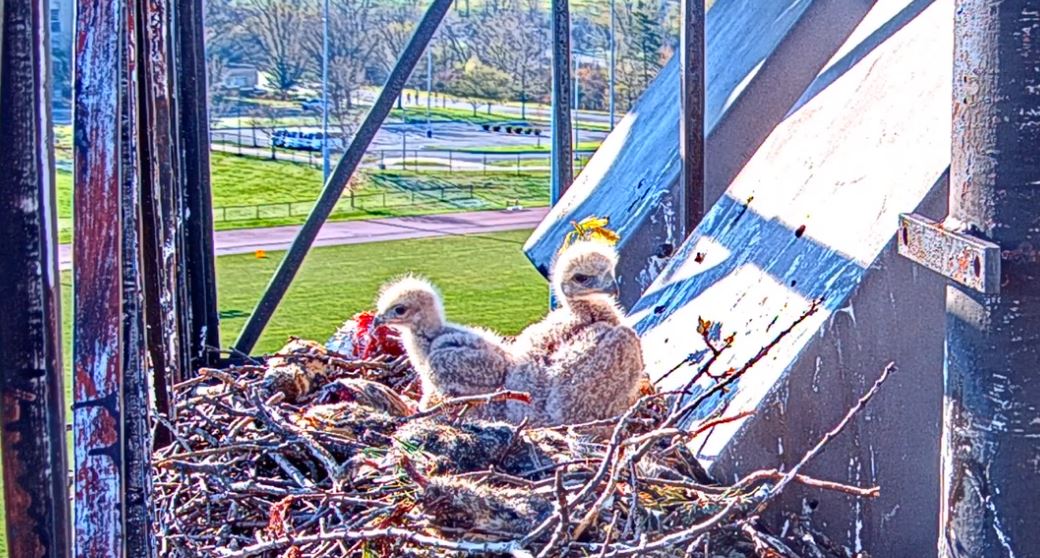 May 13, 2020Questions in Hand, We Look At What’s Next
May 13, 2020Questions in Hand, We Look At What’s Next#bp-article-content, #bp-article-content p { max-width:885px; }
After weeks of discussions, 340 people ranked 5 proposed questions that are possible to investigate on the Cornell Hawks cam, using four criteria: interesting, specific, measurable, and feasible. Thank you to everyone who voted!
The two…
 April 7, 2020New Hawk Investigation Launches
April 7, 2020New Hawk Investigation LaunchesBig Red and Arthur are incubating three eggs on the Cornell Lab of Ornithology’s Red-tailed Hawk cam and it’s the perfect time to start a new investigation! As the hawks start their breeding season, join the Bird Cams Lab community…
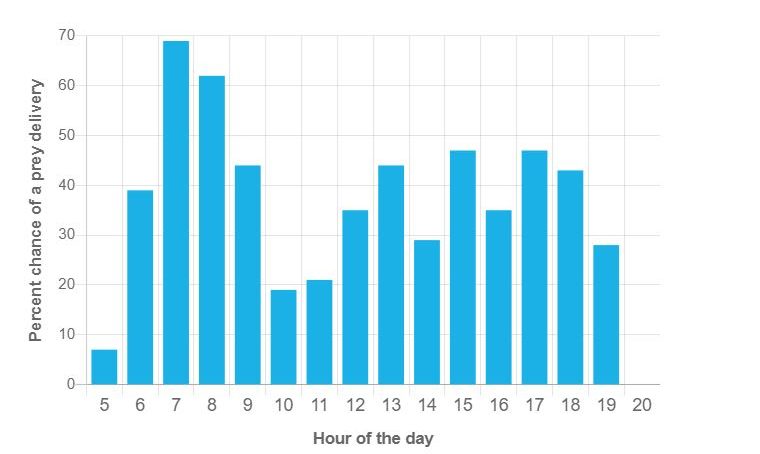 October 13, 2020Nestlings snack all day on the prey delivered in the morning or afternoon
October 13, 2020Nestlings snack all day on the prey delivered in the morning or afternoonLast week we released the first set of visualizations that looked at participants’ sampling effort and the first behavior we studied: vocalizations. This week we dive into the other intriguing and fun-to-watch behaviors: feedings, prey deliveries, and three nestling-specific ones…

